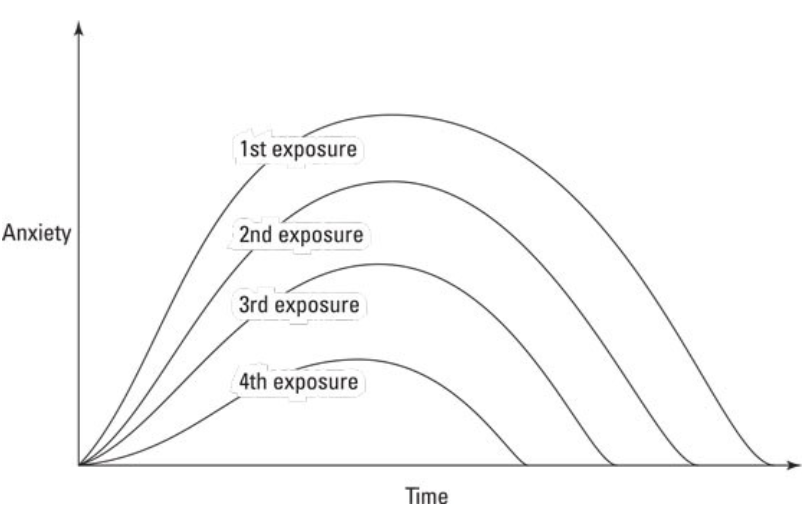Exposure Therapy
Exposure Therapy
By staying in the situation your anxiety will fall. The following diagram may help to explain this. When we are afraid of a situation like going out, we will often try to avoid it. Avoidance relieves anxiety in the short term, but it can often lead to long term difficulties. This is because the vicious circle of anxiety and avoidance build up. Exposure is useful to break this cycle. It teaches you to slowly face the feared situation until anxiety falls. As you can see, with each time you expose yourself to the feared situation and “stick with it”, the less anxiety you will feel.

Whilst facing your fear may sound difficult, it is not impossible. Try to think of an example in your life where you have felt very anxious about something and after practice your anxiety is reduced. A common example is when we learn to drive. To begin with the learner driver may practice at an airfield or on quiet roads, whilst others start with a driving instructor with dual controls. With repeated practice the learner driver becomes more confidant, tackling more difficult situations such as a three-point turn, reversing round a corner, and an emergency stop. If the learner driver only practiced for a minute at a time then it would take a long time to become confident, which is why lessons last for 1 hour (prolonged). After regular and repeated practice the driver’s confidence increases. They begin to feel more comfortable on busy roads, traffic light, and roundabouts.
There are 3 golden rules of exposure therapy:
- The first is that it is graded which means that you slowly face your fears, starting with something that is easy and building up to harder situations.
- The second rule is that you need to practice the same situation repeatedly (over and over again) until you feel less anxious.
- The third rule is you should stay in the feared situation (prolonged) until your anxiety falls (usually takes between 30-60 minutes).
















